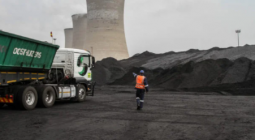Closing coal plants early makes economic sense in Pakistan
An end to fossil fuel-based power generation is key to the success of our energy transition and has been a major point of discussion in climate negotiations.
The phaseout of coal was a theme that cropped up at a variety of COP28 events; thirteen additional countries joined the Powering Past Coal Alliance, including major polluters and oil and gas exporters like the US and the UAE. But while the science behind a fossil fuel phaseout is quite clear, the question of how to finance it looms large.
The Asian Development Bank’s (ADB) Energy Transition Mechanism (ETM) is one attempt to answer this question. The scheme aims to make capital accessible to developing markets that want to transition away from fossil fuels in their power-generation mix. It proposes a combination of market-based mechanisms and concessional grants and loans to help owners retire polluting assets earlier than contracted, while encouraging them to invest in renewable alternatives.
Though promising, agreeing on a deal that is acceptable to all parties makes this a field fraught with challenges.
Assessing the first transaction
Indonesia’s agreement to prematurely retire its 660 megawatt (MW) Cirebon-1 coal power plant is the ADB’s first official ETM deal. A Memorandum of Understanding was signed between owners Cirebon Electric Power and the ADB in November 2022. It proposes a refinancing deal for the 12-year-old plant that would slash 10-15 years off its 40-50-year lifespan.
The fact that more than a year has now passed with no settlement hints at how complex and time-consuming these discussions can be. The opaque nature of the negotiation process – there has been little public participation, for example – makes it difficult to ascertain what is happening behind the scenes. A “non-binding” framework deal to terminate the plant’s power purchase agreement seven years early was announced at COP28 in December, but the actual transaction isn’t expected for some months yet.
Proposing a retirement framework
An ETM transaction as conceived by the ADB ideally involves an arrangement between incumbent plant owners, the government, and ETM investors.
According to an October 2023 report by the Institute of Energy Economics and Financial Analysis (IEEFA), any asset qualifying for an early retirement scheme typically possesses these three major characteristics:
- From a public sector perspective, the government pays the least but gains the most from the asset’s removal from the power grid.
- From the owners’ point of view, business as usual looks economically bleak due to high running costs (and subsequently low demand and revenues) or because the plant requires significant maintenance in the near future.
- From an investor’s perspective, a good candidate would be relatively inexpensive, while still gathering reasonable returns until its retirement.
Furthermore, the ideal retirement would not heavily affect its associated electrical grid and therefore not compromise energy security; the plant owners will already have decarbonisation and net-zero emissions commitments incorporated into their business portfolios; the plant should not already be near retirement age, which would undermine a deal’s environmental benefit and possibly lead to the undesirable perception of the owners being overcompensated.
The privately owned Cirebon-1 certainly ticks most of these boxes, if not all. The middle-aged plant’s multinational corporate owners are on board with the energy transition and the plant’s exit from the over-supplied Java-Bali grid will not threaten Indonesian energy security. Moreover, a price tag of USD 300 million is reasonable compensation for its owners, because this plant is already debt-free and therefore only lost revenue must be accounted for.
The Pakistan model
The IEEFA’s analysis of other potential ETM markets has seen Pakistan emerge as a possibility: its thermal power fleet is stocked with middle-aged, medium-sized liquified natural gas (LNG) or diesel plants that could be candidates for early retirement.
While the share of coal in Pakistan’s power grid may not be as high as in Indonesia, the country’s thermal fleet is responsible for generating 60% of the electricity consumed nationwide. As of 30 June 2022, just under 70% (18.75 gigawatts) of installed thermal capacity in Pakistan was in private hands (known as Independent Power Purchasers or IPPs) and the state-owned Central Power Purchasing Authority (CPPA-G) is the only body that can terminate these power purchase agreements. Generous allowances such as dollar-indexation, fixed-capacity charges, long-term power purchase contracts and sovereign guarantees for payments often insulate these plants from market forces.
Thermal plants in Pakistan also operate on imported fuels, such as coal, furnace oil and LNG, which are purchased in foreign currencies and subject to extreme price volatility and supply chain issues.
This combination of unsustainable incentives and foreign exchange-intensive fuels has led to a capacity payment trap that the Pakistani state cannot shake off. During a Senate Standing Committee in August, the energy ministry revealed it had paid out PKR 1.3 trillion (USD 4.6 billion) to IPPs in capacity payments during the fiscal year 2022-2023. This is a huge amount considering Pakistan’s entire federal budget for 2023-2024 is PKR 14.5 trillion.
Under these tenuous circumstances, it makes both economic and environmental sense to retire such assets. The IEEFA’s aforementioned Pakistan report identifies three thermal IPPs that could make for suitable ETM test cases: Saif Power, Halmore Power and Sapphire Electric.
According to IEEFA findings, retiring each of these plants at age 15 would carry a cumulative estimated price tag of USD 108 million and avoid approximately 18 million tonnes of CO2 emissions.
These plants together constitute less than 2% of the energy supplied to the grid, so early retirement should not threaten Pakistan’s energy security. It could also save the government up to USD 210 million per plant in lieu of excess capacity payments.
ETM facility offers a way out
Like most of Asia, Pakistan’s coal fleet has not yet peaked – the country’s oldest coal-fired plant is just six years old. The domestic coal fleet enjoys high utilisation rates and generous returns, which makes it a profitable venture for incumbent plant owners. This poses a challenge for accelerated coal phaseout initiatives, considering the substantial capital investment needed to write down these assets in the near-term.
The economics become more favourable as these plants age. Yet, if the lengthy, drawn-out negotiations for the Cirebon-1 plant are any indication, conversations need to happen now to assess the willingness of the range of stakeholders involved; some may agree, some may not.
Rumours are afloat that Beijing, as the sole funder of coal-fired power in Pakistan, has taken a step back in expanding the China Pakistan Economic Corridor (CPEC).
Meanwhile, existing CPEC plant owners have reportedly been facing supply chain issues stemming from uncleared CPPA-G dues surpassing PKR 400 billion: pressed by a shortage of cash and unable to maintain fuel inventories, Engro Powergen Thar Ltd, which is owed PKR 65.5 billion, threatened to shut down completely in May 2023; Port Qasim Electric Power, owed PKR 77.3 billion, served the CPPA-G a formal payment default notice during the same month.
An ETM facility that offers a way out of these sticky situations may be an opportunity to bring these troubled coal plants on board.
Whatever the case may be, the pursuance and financing of a timely phaseout requires careful planning. Reducing a country’s fossil fuel dependency must go hand-in-hand with an acceleration in renewable energy and smart grid infrastructure investments, while minimising impacts for communities and workers.
Despite the numerous technical feasibility studies for a managed phaseout that have been conducted around the world, only a successful pilot can begin to unpick the challenges – and establish whether replicable, regional models can be created.
Cover photo: Opinion: Is Pakistan really phasing out coal? | The Third Pole





